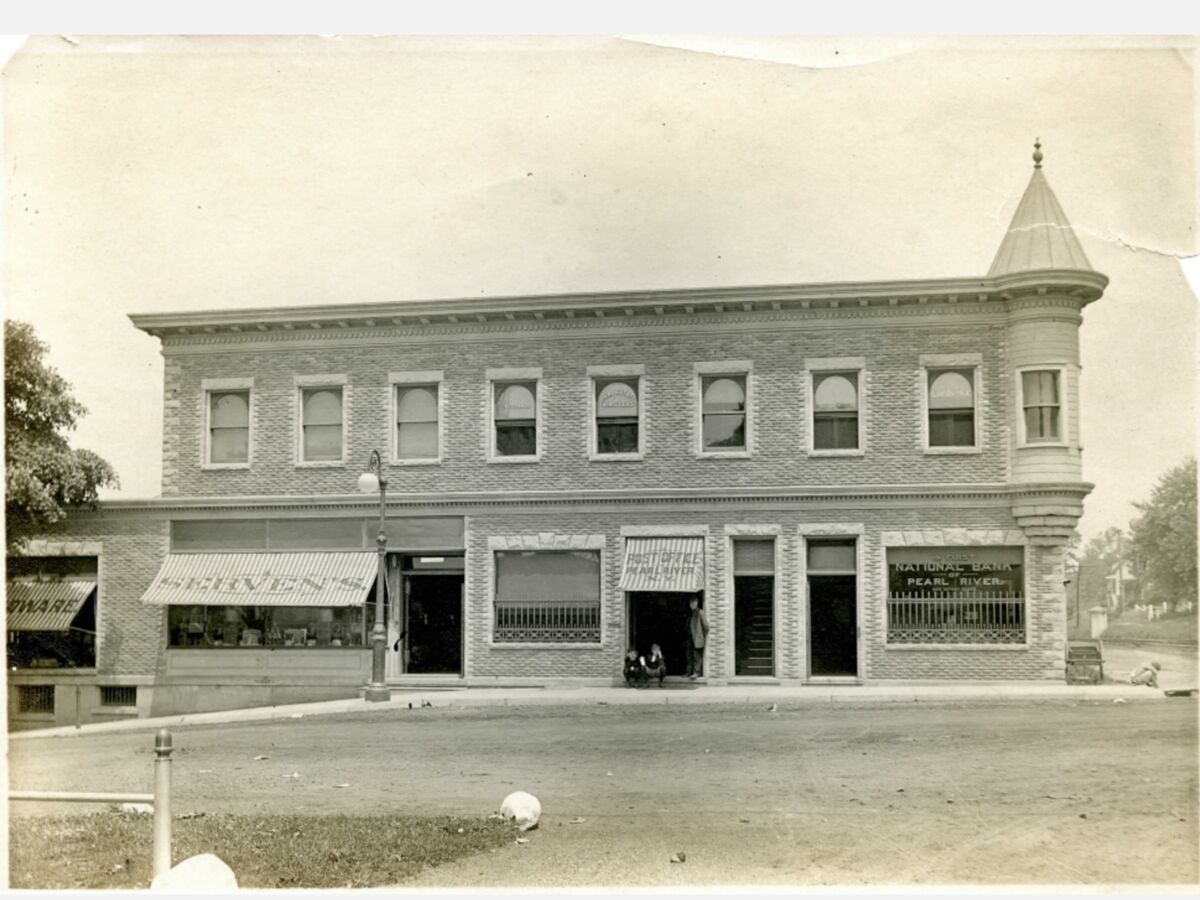Image


Pearl River was abuzz with excitement the morning of Thursday, Dec. 29, 1921. Residents strolling through the downtown were remarking about the snow that had fallen overnight and anticipating the hamlet’s annual New Year’s Eve ball just two days away.
About 12:30 p.m. a well-dressed man wearing a black derby hat walked into the First National Bank at the corner of Railroad and East Central avenues. The bank’s employees had left for their lunch hour save for two men, cashier James B. Moore and bookkeeper Siegfried Butz.
The man, who had rented a safe deposit box under the name C.F. Richards, told Butz he needed to retrieve some important papers from the box, according to an account in Bankers Monthly. When the cashier turned around after complying with the request, he found a German Luger pointed at him, and the intruder ordered the pair to hand over the money they were counting.
A struggle ensued that ended with Moore, 35 and, and Butz, 19, lying dead on the floor as the thief ran out of the bank empty handed. A railroad worker who tried to come to their aid was wounded and a trail of blood led from the bank to an automobile in which the robber escaped.
The robber’s hat, a set of keys, a pair of eyeglasses, a German army pistol that had jammed after one shot had been fired, and an American revolver were found at the scene.
A crowd gathered outside the bank, including Siegfried’s father, Walter Butz. They waited a few moments, fearing more shots, before they went in. “When Dad finally went inside, he found Siegfried slumped on the floor dead. It was a horrible shock, as you can imagine. He rushed home to tell us but we already knew,” according to an account from the victim’s sisters in The Rockland Independent Leader.
The victims were buried at Nanuet Cemetery. The New Year’s Eve ball was canceled; church bells and the whistle at the Dexter Folding Co. plant were silent as the new year dawned.
‘The midget’ identified
Three months later, the stricken families and the grieving community would learn the would-be robber’s true name. The Pinkerton National Detective Agency identified the killer as Henry J. Fernekes, who was dubbed “the midget bandit” because of his diminutive stature. He was described in the press as standing between five-foot-three and five-foot-four inches tall.
Fernekes, who killed three men during a life of crime that stretched across the country, had come to be in Pearl River after fleeing Illinois following a bank robbery, settling in Westwood, N.J.
Fernekes was one of the last solo holdup men before gangs led by the likes of John Dillinger came to dominate the scene.
“Dillinger wasn’t in the same league with him is the consensus of opinion,” according to an article in The Journal-News. “He’s ten times tougher than Dillinger, gangdom says.”
“The midget was as bizarre as any criminal created by a mystery writer,” according to the Woodstock, Illinois, Daily Sentinel. “He was considered by detectives who trailed him during his life of crime as the shrewdest public enemy at large.”
Fernekes studied drawing at the Chicago Art Institute so he could draft plans of the banks he intended to rob; took a job as a welder in order to master using a blowtorch to cut into bank vaults; and taught himself how to stop a steam locomotive in its tracks.
He was eventually indicted in the Pearl River slayings, but never stood trial here. By then Fernekes had been convicted and sentenced to death by hanging for the “street robbery” in Chicago of a bank treasurer “when he resisted efforts to relieve him of $18,000 he was taking to a bank,” according to the Jan. 28, 1926, edition of the Pearl River News.
His death sentence was overturned in 1927, but Fernekes was sent to the Joliet, Illinois, penitentiary on a 10-year-to-life sentence in another bank robbery.
In 1935, Fernekes escaped from prison disguised as a visitor. After being captured three months later, he “kept the promise he had made to police that he would never go back to jail” by swallowing poison from a vial hidden in his trousers while in a holding cell, according to The Daily Sentinel. He was 38 years old.
READ MORE BY THIS AUTHOR
Spy's Purloined Plaque Replaced, But Disappearance Still a Mystery
Secrets of Harriman State Park: Tycoon's Ruins, Jackie Jones Tower